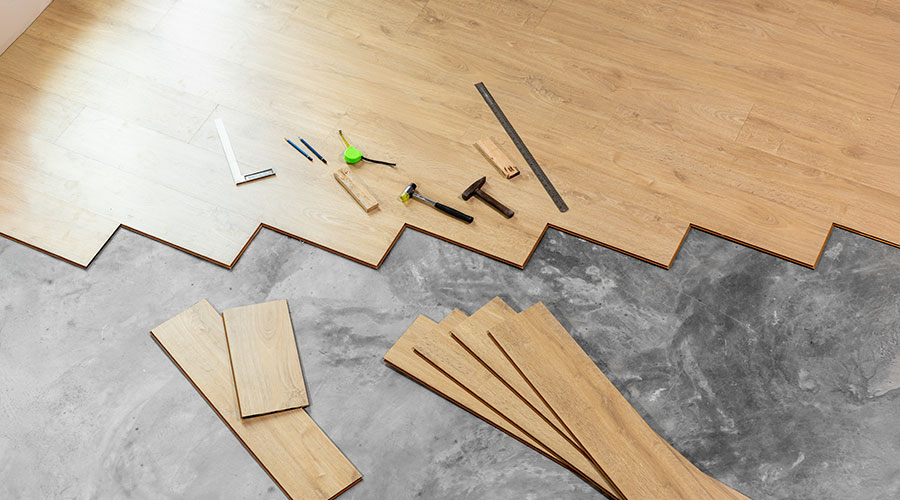Look at Carpet's Full Life Cycle
All too often, the cost of new carpet is evaluated in a very simplistic way — on a first-cost basis. While first cost considerations are important, especially when budgets are tight, they aren't the whole story. In fact, relying on a first-cost analysis may well lead you to spend more on carpet in the long term.
Understanding life-cycle costs will help you make better purchasing decisions, since it will allow you to see the limitations of relying strictly on first costs to evaluate competing options. Second, it gives you an understanding of life-cycle costs that will encourage you to protect your investment in carpeting by making other investments (e.g., appropriate cleaning) that will extend carpet life and therefore reduce the life-cycle cost.
"Get it in the door and keep it on the floor." That philosophy should guide the carpet selection process. It means selecting the appropriate product for the particular application so it will deliver the performance and life expected. Putting the right product in the right place will prevent you from prematurely replacing it and spending a small fortune to maintain it in the process. The goal is to prevent waste of material, money, resources and time. It's green in dollars and in conserving resources.
The biggest problem in the industry is having the wrong product in the wrong place. This sucks dollars from your budget, steals time from your busy schedule and compromises the appearance of your facility. To prevent this from happening, you have to use common sense and think practically. For example, that beautiful carpet with the great pattern that has lots of yellow in it may look great with the décor, but you're going to be a slave to maintaining it because yellow it the hardest color to maintain and it can ugly out fast.
Doing the Numbers
Let's start with a typical life cycle cost formula. First, add initial cost plus removal costs plus cost of maintenance. Divide that total by years of use. The result is life-cycle cost.
The calculation should capture all the costs related to carpet: the initial purchase cost, the removal of the old flooring material, the preparation and installation charges for the new carpet, the cost of business disruption, disposing of old floor covering, maintenance requirements of the new carpet and associated costs, plus the costs of cleaning chemicals. All these costs must be factored into the analysis to yield the true outlay of monies over the predetermined period of time.
The denominator is the years of use. That means answering the question of how long you want the carpet to last. Of course, you'll want to select a carpet that you won't have to replace prematurely because it failed to live up to expectations in performance or appearance. At the same time, however, you also have to determine whether the facility can keep the carpet for as long as it's in reasonably good shape or whether it will be necessary to replace the carpet in several years to install carpet that's a little more updated. For example, in a five-star-plus hotel, the carpet may be changed at a three to five year interval to help keep the rating of the property up.
To determine how long the carpet will last, you also have to qualify the use by determining what type of traffic load the carpet will be subjected to. If the space to be carpeted is going to be used infrequently, you can invest in a lower grade product. If the space will be used frequently, you'll have to invest in a better product. This sounds like common sense, but the basic principle is very often ignored, and the result is that facilities spend a lot more money than they need to.
Traffic can be divided into three categories:
- Light traffic areas such as executive office areas, conference rooms, limited-access areas and high-end specialty stores.
- Medium traffic areas such as offices, break areas, auditoriums, media centers, administrative office areas, doctors' offices and banks.
- Heavy traffic areas such as corridors, break areas, classrooms, wipe-off regions, cafeterias, congested channels, passage routes. These could be found in airports and transportation terminals, schools and colleges, restaurants, casinos, medical facilities, sports arenas and centers, and retail stores and malls.
Of course, every facility is different, and a particular facility might get more or less traffic than the average facility of its type. A bank at Times Square in New York City will get voluminous traffic as opposed to a bank in Dalton, Ga. Only you know how much traffic your facility actually receives.
The more appropriate the product for the application, the longer it will last. To be considered are construction, yarn type, color, style and construction. Of these color may be the most important. The wrong color, either too light or too dark, can shorten the life cycle of any carpet and make you a slave to maintaining it. This factor will raise life-cycle costs exponentially.
Remember: The more harsh the traffic on carpet, the greater performance characteristics it will require. If you question any information you've been given by a manufacturer or sales rep, seek immediate help. Much as they may know, they are not technical experts. Don't invest more or less than you should or have to; either way you could have a problem.
The product you want or need always exists. It may have to be tweaked to deliver what you need but you can always find what works. Establish the expectations, then meet or exceed them — make sure whomever is submitting carpet samples understands exactly what your expectations are and ask them for similar installations you can contact to actually find out how the product performs and the satisfaction levels achieved.
Related Topics:













